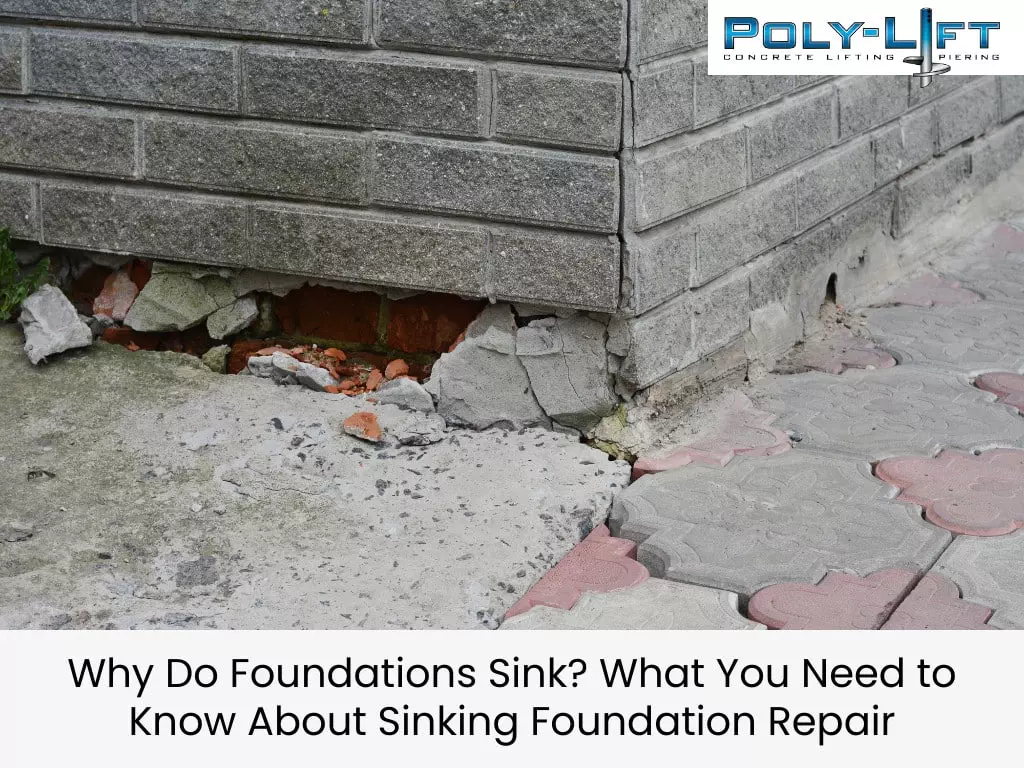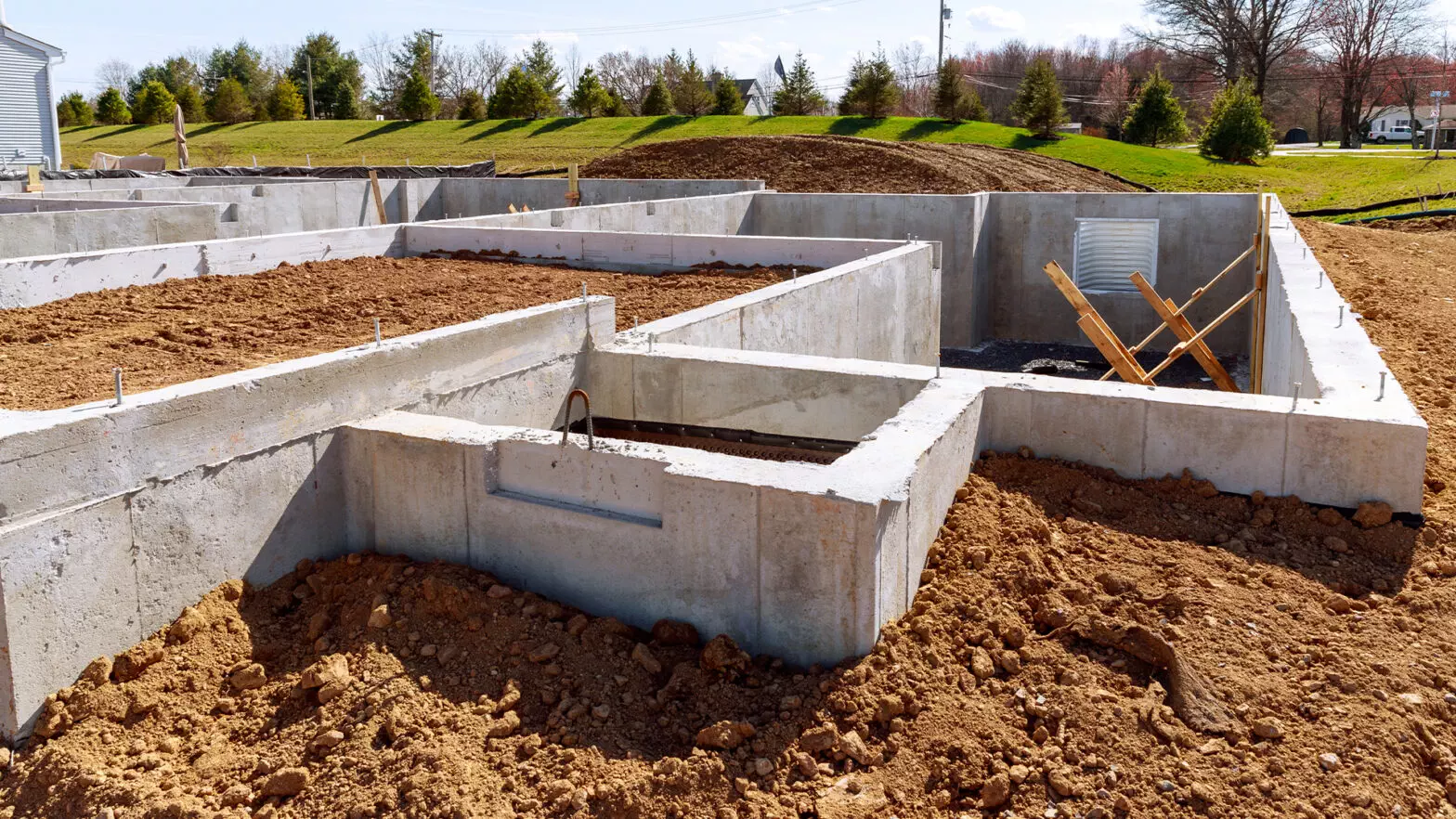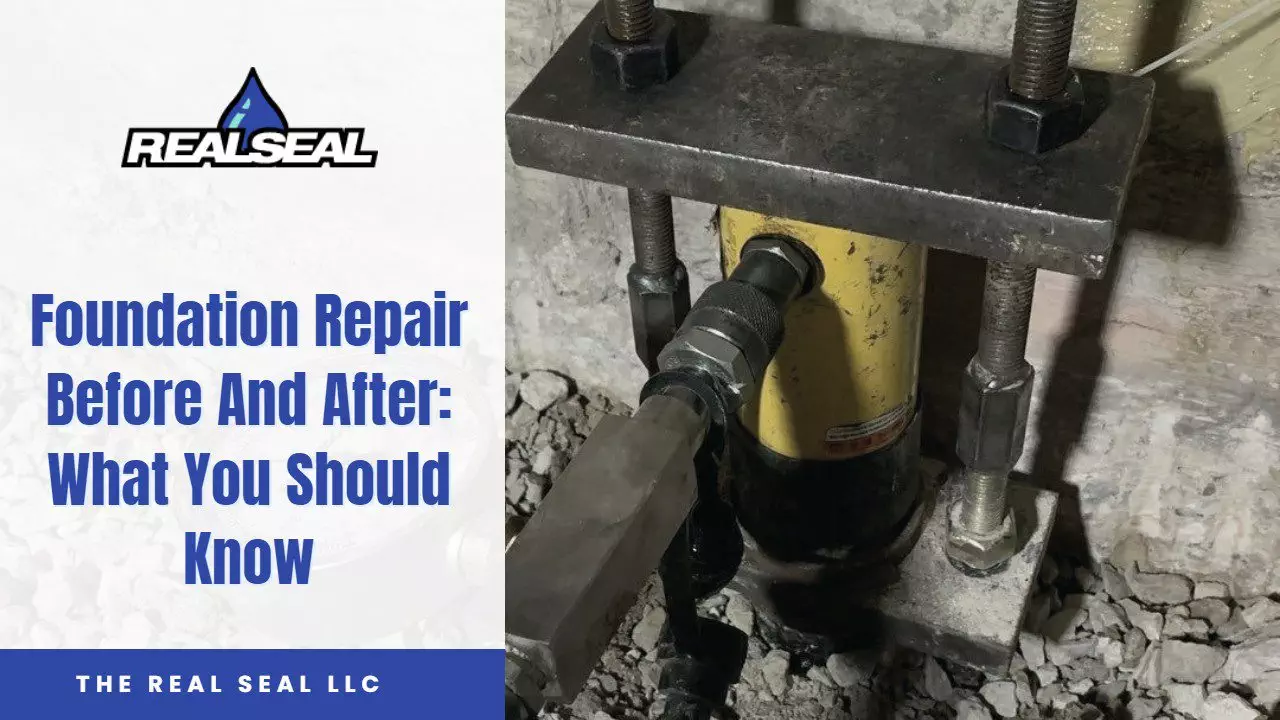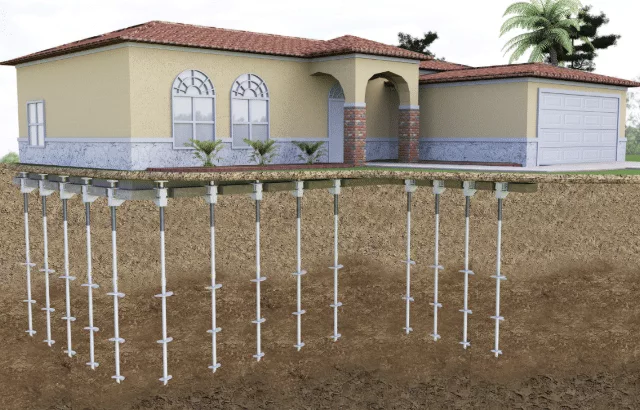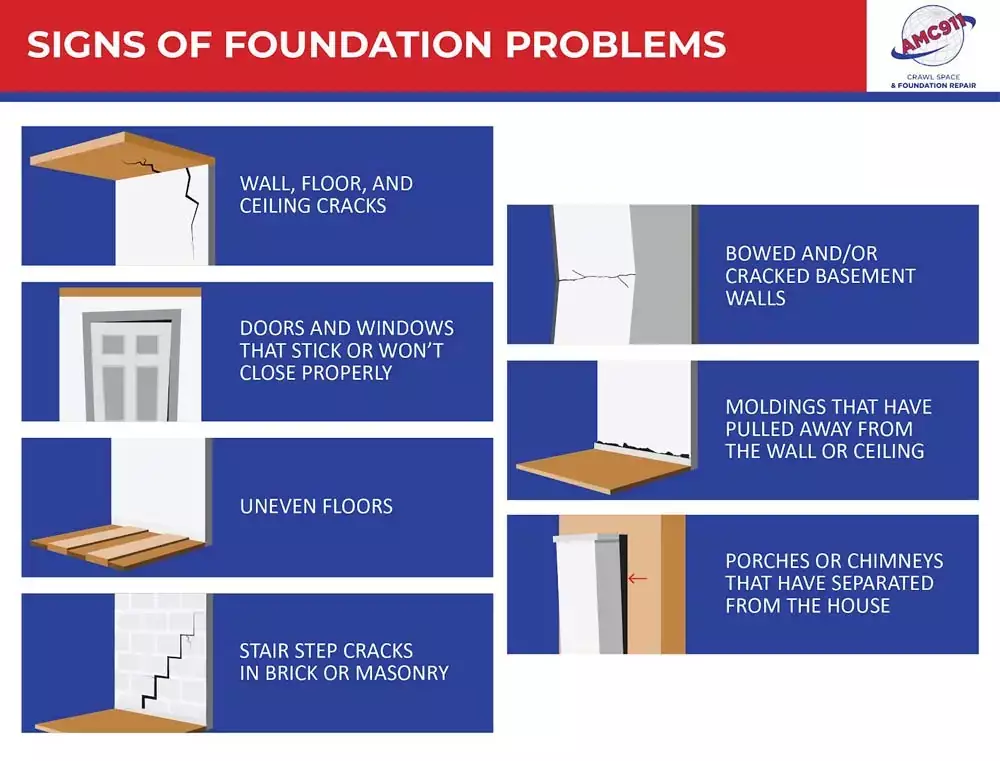
How to Identify Foundation Problems Without Breaking the Bank
Ever wondered if those small cracks in your walls could spell trouble for your home’s foundation? Recognizing how to identify foundation problems can save you a lot of time and money in the long run. Instead of hiring an expensive expert right off the bat, you can learn to spot the early signs yourself. By catching these issues early, you might be able to avoid more serious, costly repairs. Plus, understanding what to look for empowers you to maintain your home’s structural integrity.
Foundation issues often start small, like hairline cracks or uneven floors, and can escalate if left unchecked. But don’t worry, you can address these without draining your savings. Learning to notice signs of foundation distress such as moisture buildup or gaps around window frames can be crucial. Additionally, knowing when to bring in a professional for a thorough foundation inspection will ensure your home stays safe and sound. Keeping an eye on basement and crawl space areas can also help identify potential problems early on.
Ready to dive into the world of home foundation maintenance? Discover easy and affordable ways to keep your house on solid ground. Explore how you can effectively manage these issues and keep repair costs low. Let’s get started on ensuring your home stands tall for years to come!
Within the post
How to Identify Foundation Problems
Foundation problems might seem scary, but don’t worry. You can learn how to identify them. Your home is probably your biggest investment. Therefore, knowing how to spot issues early helps keep it safe and sound.
Look for Foundation Cracks
Cracks are often the first sign of trouble. They can show different things. Hairline cracks are common and not always a problem. However, larger cracks could mean something more serious. Use a flashlight to examine your basement and exterior walls. Be on the lookout for stair-step cracks, which sometimes appear in brickwork.
But how can you tell which cracks are worrying? If you notice cracks wider than a quarter-inch, you might need to worry. These can indicate foundation damage. Vertical cracks are less of a problem compared to horizontal ones, which could mean your walls are under pressure.
Inspect for Signs of Foundation Issues
Unlevel floors can be another sign of trouble. Walk around your home and feel for sloped areas. You might place a ball on the floor and see if it rolls in one direction. If it does, there’s a possibility of foundation settlement.
Also, check doors and windows. Do they stick or are hard to open and close? This can be a sign of shifting in your framework. Look at your walls next. Are there bulges or bows? These might indicate structural foundation problems. Use a ruler or level to check if your walls are straight.
Examine Basement Foundation Issues
Your basement can tell a lot about your home’s foundation. Water pooling on the floor is a red flag. Basement foundation issues often involve moisture. And, where there’s moisture, mold can also develop. Smell for musty odors as they can help identify issues early.
Moreover, use a screwdriver to check for soft spots in wooden beams. These could indicate rot, often caused by water. Fixing foundation wall problems early can help prevent bigger headaches later. If your basement walls or floors have hairline cracks, monitor them. Sometimes, they are harmless but watch for any changes.
Conduct a Foundation Inspection
A thorough Foundation Inspection includes looking both inside and outside your house. Walk around your home and notice any foundation distress. Look at the perimeter and check for any changes or gaps. It’s crucial to examine these areas regularly. This way, you can spot potential problems early.
Check for Structural Foundation Problems
Examine all your walls. Bowing or bulging walls are concerning. These signs might mean there’s too much pressure against them. Use a level to check how straight your walls are. Look closely at the ceiling and floor lines, too. They should be even and smooth.
Look for gaps around your windows and doors. If they don’t fit as they should, it could signal foundation issues. Keep an eye on your home’s exterior, as well. Check for cracks in the stucco or brickwork. These are all signs of potential structural foundation problems.
Identify Foundation Settlement Signs
Foundation settlement is common in older homes. But how do you know if it’s happening to yours? Walk through your house and check for uneven floors. Use a level to see if any parts are sloping. You might notice cracks near the corners of your rooms, too.
Foundation Settlement might also show up in the exterior. Your walls could lean or your chimney could start pulling away from the house. If you’re seeing these signs, it’s wise to consult a pro. They can help diagnose the severity of your foundation settlement.
Consider Foundation Maintenance Regularly
Regular foundation maintenance is a key step in preventing problems. Scheduling regular checks can save you money in the long run. Here are some simple maintenance tips you can follow.
- Clean gutters
- Control water drainage
- Monitor soil moisture
Cleaning your gutters helps to control where water goes. Remember, water is a common cause of foundation issues. If water pools near your foundation, it can weaken the soil and destabilize your home. Make sure your yard slopes away from your home, too. This is a cheap and effective way to control water drainage.
Additionally, monitor soil moisture levels around your home. During dry periods, water the soil to prevent it from shrinking. When the soil dries out, it can cause your foundation to shift. These preventative steps can save you from costly foundation repairs down the road.
Focus on Foundation Repair Tips
Doing repairs can be expensive, so knowing foundation repair tips is essential. First, always consult professionals for advice. They have the expertise to assess your situation properly. If you need to repair your foundation, get more than one quote. Research affordable local services and compare their costs.
Understand the Cost of Foundation Repair
Foundation repairs can range from a few hundred to several thousand dollars. Therefore, it’s crucial to budget for potential repairs. Some repairs, like sealing small cracks, are inexpensive. But others, like fixing foundation upheaval, can be costly.
It’s smart to research affordable local services that fit your budget. Remember, minor issues can develop into major ones if ignored. So, address them promptly to keep foundation repair costs low.
Evaluate Foundation Damage
When it comes to foundation damage, not all issues are equal. Some are minor and easy to fix, while others require professional help. Assess both minor and major damages to decide the right course of action. Small fixes might involve sealing cracks or adjusting gutters. Major repairs could mean underpinning your home.
Plan your repairs based on the damage severity. Some issues are urgent, and others can wait. Understanding this helps you prioritize and budget accordingly.
Know When to Seek Professional Help
Knowing when to ask for professional help is vital. If you notice issues that exceed DIY repairs, reach out. Some problems are simply too complicated to tackle alone. Structural foundation problems, for instance, often require a professional engineer’s expertise. Trying to fix these yourself may lead to more damage and higher costs.
Different Solutions for Home Foundation Problems
When it comes to home foundation problems, there are various repair options. Which solution you choose depends on the issue at hand. For small problems, you might try some DIY solutions.
Consider DIY Solutions for Minor Issues
Sealing small cracks is a good start. Use caulk to fill in gaps and prevent water from getting in. It’s easy and effective for minor foundation cracks. Address minor water leaks quickly, too. This can help protect your home’s foundation from damage.
Follow simple preventative maintenance steps to keep your foundation in good shape. Regularly check your home and fix issues as you find them. This helps to manage chip break and can save you money.
Explore Advanced Techniques for Foundation Repair
For more severe issues, advanced techniques are needed. These might include installing steel braces or underpinning. Sometimes, foundation repair might involve lifting the house and installing piers. These techniques require professionals, so always consult with them before proceeding.
Learning from Common Foundation Problems
It’s important to educate yourself on typical issues. Understanding these common problems can help you stay proactive. Sometimes, issues recur and recognizing these patterns helps you address them early.
Recognize Recurring Foundation Problems
Take note of any patterns in your home’s foundation issues. Are cracks appearing in the same spot repeatedly? Are doors sticking more often? These could be signs of a recurring issue. Regular inspections can help manage these problems.
Being proactive in addressing recurring signs is key. By spotting issues early, you can prevent them from becoming worse. Regular checks and maintenance make all the difference.
Understand Regional Foundation Challenges
Not all foundation problems are the same across different areas. Soil type plays a huge role in foundation performance. In some regions, clay soil expands and contracts with moisture changes. In other areas, sandy soil can shift after heavy rains.
Climate impacts foundation integrity too. Therefore, adapting maintenance to your local conditions is essential. If you’re in a wet region, ensure your drainage system works well. Conversely, in dry areas, keeping the soil moist can help prevent foundation settlement.
Utilize Resources for Foundation Information
Finally, use various resources to expand your foundation knowledge. Research online for useful foundation tips. There are plenty of articles and videos that can offer guidance. You might want to join local homeowner groups for advice. These groups can be a valuable source of information.
Also, never underestimate the value of accessing professional guidance when needed. Whether it’s consulting a structural engineer or speaking with local contractors, their expertise is invaluable. By using all these strategies and resources, you can maintain a healthy and strong foundation for your home.
Take Control of Your Home’s Foundation Today
Identifying and addressing foundation issues early on can save you money and prevent larger problems down the road. By recognizing signs like cracks or uneven floors, you protect the integrity of your home. Taking proactive steps helps you maintain a safe and comfortable living environment.
Begin by conducting a simple inspection around your home’s perimeter. Look for visible cracks, unusual gaps, or water pooling near the foundation. If you spot any concerning signs, consider reaching out to a professional for further evaluation. Documenting these findings will help in assessing the urgency and potential costs involved.
Don’t wait for problems to worsen. Act now to safeguard your home by setting aside time each month for a quick check. If you’re unsure about anything you find, contact a local expert for advice. Your home deserves attention, and your peace of mind starts with taking that first step today.

